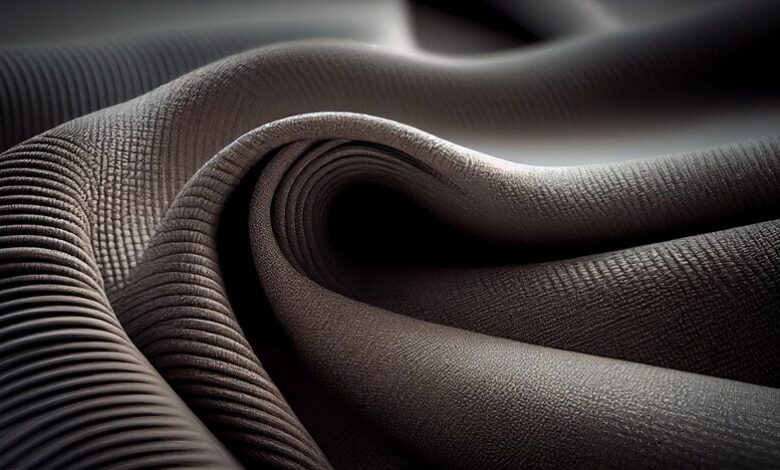Textiles Transformed: The Top Trends in Performance Fabrics for the Future

Key Takeaways
- Performance fabrics are revolutionizing activewear and casual fashion.
- Technological advancements improve fabric durability, comfort, and aesthetics.
- Innovative materials offer solutions for sports, healthcare, and everyday wear.
Table of Contents
- Introduction to Performance Fabrics
- Benefits of Modern Performance Fabrics
- Innovations in Fabric Technology
- Applications in Sports and Activewear
- Emerging Trends in Textile Design
- Sustainability and Eco-friendly Materials
- Future Prospects
Introduction to Performance Fabrics
Performance fabrics represent a remarkable shift in how we think about clothing, combining technology and functionality in ways never seen before. Unlike traditional fabrics that prioritize either comfort or durability, these materials are designed for specific actions and conditions, making them ideal for sports, casual wear, and even specialty applications like medical textiles. For instance, the use of spandex material has revolutionized many aspects of the textile industry. This material offers exceptional stretch and recovery, which significantly enhances comfort and durability in various garments, from workout clothes to everyday wear.
Benefits of Modern Performance Fabrics
Today’s performance fabrics offer a myriad of benefits that extend far beyond just comfort and aesthetics. Key advantages include:
- Durability: Engineered to withstand the rigors of physical activities and frequent washing, performance fabrics maintain their integrity and appearance over time. Advances in textile engineering ensure that these fabrics can endure the harsh conditions of both everyday wear and high-intensity activities.
- Moisture Wicking: One of the standout features of performance fabrics is their ability to pull sweat away from the skin efficiently. This not only helps keep the wearer dry but also minimizes skin irritation and discomfort, making these fabrics ideal for athletes and anyone engaging in physical activity.
- Temperature Regulation: Another significant benefit of performance fabrics is their capability to adapt to body temperature and environmental changes. By maintaining optimal comfort regardless of the external conditions, these fabrics support better performance and comfort in various climates and activities.
Innovations in Fabric Technology
The swift progress in technology has enabled the evolution of performance fabrics to unprecedented levels. Notably, the incorporation of intelligent fibers capable of monitoring vital signs has gained significant traction in both the sports and healthcare industries. These cutting-edge smart textiles can deliver real-time data, enabling athletes to optimize their performance and offering healthcare providers an effective means to monitor patients. Furthermore, a noteworthy innovation in this field is the development of compression fabric. This specialized fabric not only enhances blood circulation but also minimizes muscle fatigue, leading to improved recovery times for athletes. Extensive studies have indicated that the use of compression garments has led to substantial enhancements in athlete recovery and performance across various professional sports.
Applications in Sports and Activewear
The incorporation of performance fabrics in sports and activewear has sparked a revolution within the industry. Prominent brands have increasingly integrated advanced materials such as moisture-wicking and lightweight fabrics into their sportswear designs. These innovations not only elevate the visual appeal of the garments but also deliver substantial performance enhancements for athletes. This trend has resulted in a diverse and extensive range of options in the market, catering to the specific and varied requirements of athletes across different disciplines, from professional marathon runners to dedicated gym enthusiasts. The widespread integration of these cutting-edge fabrics has paved the way for the development of garments that not only offer superior stretch and breathability but also possess advanced sweat management capabilities and overall enhanced functionality. This has significantly improved the overall athletic experience for users, allowing them to perform at their best while being comfortable and supported by their activewear.
Emerging Trends in Textile Design
The textile business has seen a significant transformation in recent times, especially in the field of textile design. One noteworthy development that has become popular is the development of bio-engineered fabrics, which are revolutionizing the approach to comfort and utility in textiles. These innovative materials are conceived through sustainable production techniques, often integrating organic components to enhance their performance and minimize their ecological footprint. This shift towards bio-engineering represents a paradigm shift in textile innovation, wherein the focus is not solely on creating high-performing fabrics but also on ensuring their sustainability and ethical production practices.
Sustainability and Eco-friendly Materials
The global shift towards sustainability is exerting significant pressure on the textile industry, compelling companies to adopt more environmentally friendly solutions. This trend is characterized by a notable increase in investment in sustainable practices, including the integration of recycled materials and the incorporation of biodegradable elements into textile production processes. According to a recent report, there is a clear indication of a rising consumer demand for sustainable fashion, which is causing a notable impact on the industry. This transition not only signifies a crucial step towards reducing the carbon footprint associated with textile manufacturing but also signifies a concerted effort to address the escalating concerns related to waste management and resource conservation within the industry.
Future Prospects
Looking towards the future, the outlook for performance fabrics seems very promising. Exciting innovations such as the integration of wearable technology into fabrics and the engineering of materials at the nano-level are poised to bring about a significant transformation within the industry. The continued merging of technology and fashion is expected to open up new possibilities for performance fabrics, leading to the emergence of fresh trends and applications across various fields. The potential for intelligent textiles capable of health monitoring, adapting to environmental conditions, and dynamically adjusting their characteristics based on user activity is vast. This suggests a day when clothes will fit into our daily lives even more naturally.



